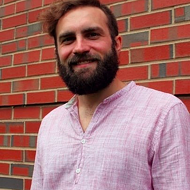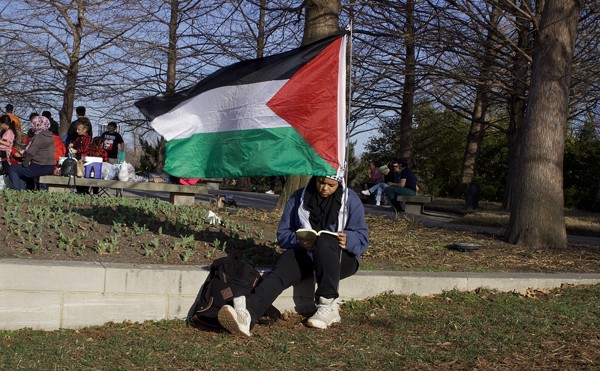On a cool October morning in 1990, a man jogging along Basston Drive in Maryland Heights noticed an odor so foul it warranted alerting the two municipal workers cutting weeds nearby. The workers tracked the odor to a 35-gallon plastic trash bin sitting out of place in the grass between Basston and Page Avenue. The bin had no lid and was instead covered in trash bags secured with wire. The municipal workers attempted to load the bin into their truck only to find it was exceptionally heavy. Inside they found a body decomposed to such an extent that it wasn't until later in the day police were certain the victim was a woman.
She was somewhere between 18 and 40, police said, wearing a turquoise sweater. Her hands had been bound, a man's shirt wrapped around her head. Police determined she'd died of asphyxiation. On a concrete wall near where the trash bin had been sitting, someone had written in graffiti, "Sorry Kym."
The media and the police quickly connected the Maryland Heights Jane Doe to the case of Robyn J. Mihan, an eighteen-year-old whose body had been found six months prior. Mihan's body had been discovered bound between two mattresses in Silex, Missouri. Both women had been discarded on the side of highways — Jane Doe 20 miles west of the city, Mihan about 60 miles northwest. Both had shirts pulled tight around their faces and their hands tied together. Traces of dog hair had been found on both bodies as well.
Four months after Jane Doe's discovery, a security guard in O'Fallon, Missouri, found a third body — also a woman. She was in a homemade wooden box and was also badly decomposed.
"He was smart about where he dumped the bodies," says Joe Burgoon, who was a St. Louis police detective in the early '90s and now works cold cases for the department. "He knew to spread them out across jurisdictions to make things harder for us."
Between March 1990 and February 1991, one man abducted at least three women from the same area in south city, raped, mutilated and murdered them before leaving their bodies along highways outside of town. Because he discarded all the bodies in some sort of receptacle — a trash bin, a pair of mattresses, a homemade wooden box — the few people familiar with the murders refer to him as the package killer.
These killings made the front page of the St. Louis Post-Dispatch, but generally with scant information about the victims. When the killing stopped, the story quickly and completely faded, both from the newspapers as well as the city's collective memory.
Barb Studt, a stepsister of one of the victims, put it this way: "For about ten years afterward, if I said, 'My sister was the one they found in the box on Highway 70,' people would say, 'Oh yeah, I heard about that.' Now they have no idea what I'm talking about."
Criminologists say the package killer likely killed more than three people. But no one has ever been charged in any of the three linked cases.
The first two victims left police little evidence to follow up on. The mattresses Mihan had been bound between were tied together in the same manner that stacks of newspapers are bundled before delivery. All four corners were meticulously tied with Conex cable, Burgoon says, the sort of material an electrician would use to wire a house.
Jane Doe had been stuffed into a trash can with a Biener Hardware sticker affixed to it, and cable had been found at that scene as well. Maybe the guy was a construction worker or a contractor, police thought. But how many of those were there in the area? It didn't help that the second victim hadn't even been identified.
At least with the first victim, Robyn Mihan, police had a name.
ROBYN MIHAN
It's very important to Saundra Mihan, Robyn's mother, that you understand this: "People are different things to different people. Robyn's life did mean something. She was loved."
Saundra is understandably wary of the media, who in 1990 printed that Robyn was a prostitute and murder victim and pretty much left it at that. For all the interest in the case at the time, no one seemed particularly invested in understanding who had been killed. The Post-Dispatch even got her age wrong, printing that she was nineteen when she was still six months shy of that.
Robyn lit up a room when she walked in, Saundra says. When she smiled her cheeks dimpled in six different places, a bit like rings around a planet. She talked with her eyes. Everyone who met her liked her. In high school, she was involved in the ROTC program. Later, she enrolled in beauty school.
Says Saundra, "You don't know what these women would have been, what they'd have gone on to do, if they had the chance, if their lives hadn't been taken from them."
Robyn grew up with her mom in Tower Grove East and later in Bevo. She went to Cleveland High School, a public school that is now abandoned, in Dutchtown. Saundra worked in health care and still does. Hearing about Robyn's childhood and teenage years, you get the sense they were quintessential south city: equal parts hardscrabble and unsupervised fun.
When Robyn was a teenager, both she and her older brother Tom got heavy into crack cocaine. A lot of St. Louisans did. Though the crack epidemic is often associated with the 1980s, it didn't stop at the end of that decade. In the early '90s, a packet of crack in St. Louis cost as little as $5. Newspaper coverage at the time stated that police busted individuals with four or five pounds of the stuff several times a week. At Lambert Airport, federal authorities intercepted over 50 pounds of cocaine and more than $1 million in drug money in a single year.
In 1988, when Robyn was sixteen, she had a daughter and named her after her mother. Baby Saundra was born three months early but healthy. When Robyn was seventeen, she became pregnant again.
"You're already a baby taking care of a baby," Saundra told Robyn at the time. She encouraged her daughter to put the second child up for adoption.
Robyn agreed. The baby, another daughter, was born in March 1990. Tom Mihan went to the hospital to visit his sister after the delivery; Saundra stayed home. She believed adoption was the right choice, but "I knew that if I went up there, I'd be taking that child home," she says. Not going to the hospital that day is now something Saundra deeply regrets.
Within two weeks, on March 22, Robyn would be reported missing. Four days after that, she'd be found dead.
The night she was abducted, Robyn was with her brother Tom in the Shaw neighborhood. The escort service Robyn worked for operated out of the house, and the siblings frequently hung out there.
For Robyn, the escort service was a safer way to make money than walking the street. But that night no calls were coming in. She, Tom and their friend Faye had exhausted their supply of crack, and Robyn was going through withdrawal.
"I told her to take a Valium and come down, crash. Tomorrow's another day," Tom says. "Instead, she went to the Stroll."
At the time, the city's red-light district, called the Southside Stroll, ran along South Jefferson between Broadway and Chippewa on the south and Cherokee to the north, a block from what is now Sump Coffee. In the early 1990s, the Mexican immigrants who would later revitalize Cherokee Street had not yet arrived in numbers sufficient to make much of mark; the hipsters were even further away.
"These women were easy victims," says an officer who worked the area at the time. "And they were easily victimized."
Robyn and her friend Faye left Shaw and went to the Stroll looking for a customer. They parked on Texas, a block from Jefferson, facing Cherokee, right next to the Fortune Teller Bar. As a rule, when one of the women got in a man's car, they made him circle the block once so the other could get a look at the car and its driver. This provided a measure of security. Robyn went around the corner onto Cherokee, and Faye sat in the car, waiting for the usual drive by. But that never happened. After two hours, Faye went back to the house on Shaw.
"We figured, with our lifestyle at the time, that she got in a car with somebody, and they went and partied," Tom says. "Still, I was worried. I was upset."
Four days later, police knocked on Saundra's door in south city.
"The only reason I was at home and not at work was because my daughter was missing and I was watching my grandbaby," Saundra says. "I knew they weren't going to tell me anything good. They weren't there to chit chat."
They peppered her with questions. When was the last time she'd seen Robyn? Who had she been with? The detectives seemed uneasy and avoided telling her why they were there.
"Look," Saundra eventually said. "I've tried to accommodate you by answering your questions. You haven't told me anything. What is it you're not telling me?"
They asked Saundra if her daughter had any distinguishing marks.
"Am I going to have to tell you that's what you came here for?" she replied. Saundra finally asked if her daughter was dead.
The detectives told her about a two-lane country highway an hour north of St. Louis. Saundra had never before heard of Silex, Missouri. The previous day, a driver who traveled the same route every morning had spotted a pair of mattresses, bound together, that hadn't been there the day before. He stopped to investigate.
Detective Burgoon says that Mihan's body was found with quite a bit of blood, signs of strangulation around the neck. There was a stab wound to the head that pierced the scalp but didn't go through, contusions on her face, cheek, wrist and feet. Some of these were defensive wounds, implying a struggle. Others were postmortem.
"My guess was she was in pain," Burgoon adds.
A few weeks after Robyn's murder, Tom says he was picked up by the police and wound up in the same room as members of the Major Case Squad. One of the officers threw a rolled-up wad of cash on the table.
"Tell us who did it, and you can keep it," the officer said.
"I don't fucking know who did it," Tom replied.
Implicit in the detective's offer were a world of assumptions: that Tom knew the killer, that he wanted to profit from his sister's death, that he'd only want to see justice if it meant a payday for him.
In the reporting of this story, Tom was generous with his time, talking for two hours about his sister and his life in the early '90s. Only one time, when he talked about police offering him a roll of cash, did he cry.







